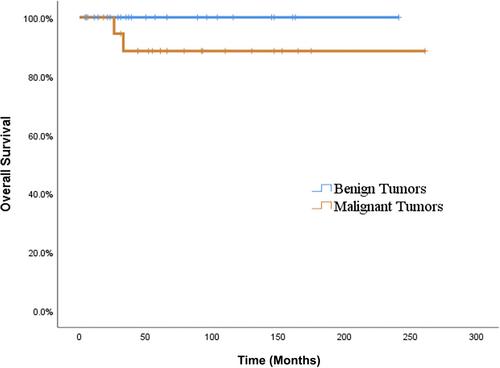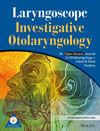Long-term follow-up and prognostic analysis of parotid tumors in children and adolescents
Abstract
Objectives
The objective of this study is to summarize the clinical characteristics, treatment, and prognosis of parotid tumors in children and adolescents.
Methods
Fifty-three children and adolescents diagnosed with parotid gland tumors were included. Survival was evaluated using the Kaplan–Meier method. Log-rank test and multivariate analysis were used to analyze the association between clinical factors and recurrence.
Results
Of the 53 patients, 30 cases were benign and 23 cases were malignant. All patients underwent surgery. Patients with malignant tumors with high-risk factors received radiotherapy or chemotherapy. The median follow-up time was 61 months. Of these, 1 patient with benign tumor and 5 patients with malignant tumors recurred. Of the patients with malignant tumors, 2 developed distant metastases and 2 died. The 5-year overall survival (OS) and 5-year locoregional recurrence-free survival (LRFS) rates for benign tumors were 100.0% and 92.9%, respectively, whereas the 5-year OS and 5-year LRFS rates for malignant tumors were 94.4% and 72.5%, respectively. The log-rank univariate test showed that tumor size >3.5 cm (p = .056), distant metastasis (p = .056), and stage III and IV (p = .032) were associated with recurrence. However, multivariate analysis did not show the above factors to be independent prognostic factors for LRFS.
Conclusion
Surgery for benign tumors depends on the location and size. Surgery for malignant parotid tumors depends mainly on the stage, grade, pathological type, and recurrence. Prophylactic lymph node dissection is required for high-grade tumors. Radiotherapy or chemotherapy for children needs more research. Both benign and malignant tumors have high survival rates after active treatment.
Level of evidence
Level 2.


 求助内容:
求助内容: 应助结果提醒方式:
应助结果提醒方式:


